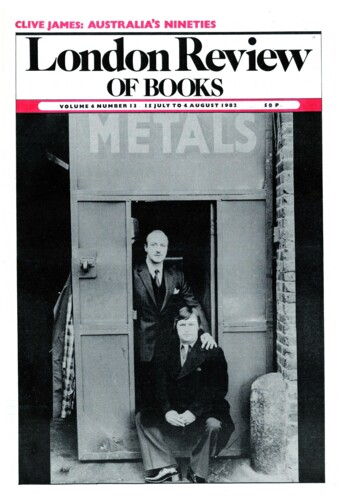Creative Affinities
Martin Swales, 15 July 1982
The unnamed narrator of John Banville’s novel is an academic who spends the summer on a run-down country estate in Ireland where he hopes to put the finishing touches to a book on Isaac Newton. Gradually, his research takes a back seat as he becomes fascinated with the family on whose property he is living. Edward Lawless is a wreck of a man, clumsy, inarticulate, frequently drunk; his wife Charlotte is noble, suffering, strangely withdrawn; Ottilie, Charlotte’s niece, is blonde, somewhat graceless, but physically available. Even in the physical abandon of his love-making with Ottilie, the narrator’s heart – and mind – are not in it. Inwardly, he is obsessed with Charlotte, and it is her image which informs – and, to a certain extent, deforms – the relationship with Ottilie. By the end of the story the narrator learns a number of lessons: he realises that many of the images and patterns he has established for himself and for those around him are false. The Lawless family are not genteel Protestant aristocracy in decline; Edward is not the brute of the narrator’s account, he is dying of cancer; Charlotte’s mysteriousness has more to do with the tranquillisers she has been taking in order to cope with the horror of her husband’s decline than with any mysterious Iris Murdoch-like spiritual drama. The ‘illustration from a Victorian novelette’, the ‘old novels’, the ‘echo of some old brown painting’ – such exercises in cultural image-making founder before the authority of simple fact. The narrator comments: ‘I dreamed up a horrid drama, and failed to see the commonplace tragedy that was playing itself out in real life.’ The sophistication of the knowing mind proves brittle and irrelevant. As Ottilie puts it: ‘You think you’re so clever, but you don’t know a thing.’ The ordinary has the last word.

